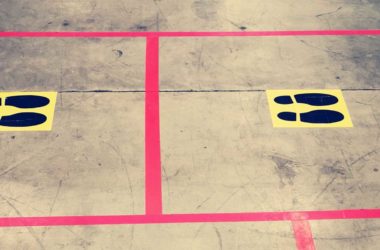What are the legal safety requirements when operating automatic industrial equipment and robotic machinery?
EU Regulations, Directives and Laws.
For Europe, there are two main pieces of legislation that place a responsibility on the designers and operators of industrial processes or machinery:
The Use of Work Equipment Directive
- Applies to any equipment used while at work
- Covers everything from a pair of scissors to a multi-axis industrial robot
The Machinery Directive
- Applies only to equipment fitted with or intended to be fitted with a drive system other than directly applied human or animal effort
- Requires a full risk assessment
The Use of Work Equipment Directive
This legislation is aimed at the employers and owners of any type of industrial robot or automated process. It requires that any person who may be put at risk by the machinery must be protected by a suitable engineering safeguard.
There are many types of engineering safeguards. For example, this can include a simple fixed guard that prevents access to moving parts of a robot. In more complex systems the safeguarding measure may rely on a safety control system. Where this is the case, the control system must be designed to be functionally safe and provide an appropriate level of protection from the hazard the automated movement presents.
The Machinery Directive
This legislation covers the sale of any new machinery and certain parts of machinery sold into the European Union. The directive defines ‘machinery’ as any system that has moving parts and is powered by something other than direct human or animal effort. It includes partly assembled machinery and components of machinery that provide a safety function.
The topic of functional safety is very important to the Machinery Directive because it is applied to a number of the components within machinery that provide a safety function. In fact, the main principles of ensuring safety are found in the Machinery Directive. The manufacturer must apply the following principles in the order in which they are stated:
- Eliminate or reduce risks as far as possible (inherently safe machinery design and construction)
- Take the necessary protective measures in relation to risks that cannot be eliminated
- Inform users of the residual risks due to any shortcomings of the protective measures adopted, indicate whether any particular training is required and specify any need to provide personal protective equipment.
Annex 5 of the Directive specifies machinery safety components, some of which have been selected below as examples of components requiring functional safety:
- Protective devices designed to detect the presence of persons
- Power-operated interlocking movable guards designed to be used as safeguards in machinery
- Logic units to ensure safety functions
- Valves with additional means for failure detection intended for the control of dangerous movements on machinery
- Guards and protective devices designed to protect persons against moving parts involved in the process on the machinery
- Monitoring devices for loading and movement control in lifting machinery
- Emergency stop devices
In technically advanced automated and robotic applications, the types of components listed above are connected together to form a control system. They contain components of electrical, mechanical, pneumatic and hydraulic nature. When used as a safety control system as part of machinery, they must be functionally safe. In relation to the machinery directive, functional safety control systems are often referred to Safety Related Parts of Control Systems (SRP/CS).











